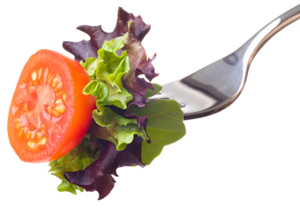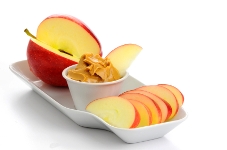 By Judi Gerber for Care2.com
By Judi Gerber for Care2.com
Did you know that June is National Fresh Fruit and Vegetable Month? And, with summer finally here, there is an increasing number of fresh fruit and vegetables to choose from each week.
Here in California, we are already starting to see the first of the season’s stone fruit, mostly apricots and cherries, but some nectarines and peaches are already arriving at my local farmers’ market.
As I have written about several times, eating locally grown or homegrown produce is the best way to get the freshest fruit and veggies.
Just last month I wrote about how eating seasonally not only saves you money, but gives you more freshness, flavor and packs the biggest nutritional punch.
The easiest way to get more into your diet is to add fresh fruits and vegetables to the meals that you are already making. I have found that if I add fresh produce to the things I already eat, I don’t ever feel like I am giving anything up and actually feel like I am getting something instead because of the additional flavor they add to things.
Here are some easy and tasty ways to increase your intake of fresh fruits and veggies.
- Add fresh veggies or fruit to salads to increase its nutrient content. Broccoli, fresh spinach, sugar snap peas, beans, or corn all make great salad toppings. One of my favorite things to add to mixed greens is fresh fruit. Depending on the season I add mandarins, tangerines, apples, oranges, strawberries, and grapes, and I always include raisins and almonds (although not fresh produce they are yummy and give added crunch to your salad). The sweetness of the fruit offsets the flavor of the vinaigrette and the greens.

- Don’t limit your salad vegetables to just lettuce; fresh veggies like broccoli, snap peas, and tomatoes make a great addition to pasta salad.
- Make pasta primavera (pasta with fresh vegetables), as an alternative to traditional spaghetti sauces. Any kind of vegetable will work, but most people try to use firm, crisp vegetables like carrots, peas, bell peppers, and broccoli along with tomatoes. Pasta primavera is usually served with aromatic herbs and the sauce is usually made of garlic, parsley and olive oil, finished with Parmesan cheese.
- If you want to stick with the traditional spaghetti sauce, add onions, mushrooms or bell peppers to it.
- Eat more fruits and vegetables for snacks. Instead of having chips and dip, try fresh cut veggies like celery, carrots, or tomatoes, without dip or with a low-calorie dip or hummus. Peanut butter on celery or apples makes a great afternoon snack because it gives you a little pick-me-up.

- Add more vegetables to the things you already make. For example, add veggies, such as corn or green beans to a can of soup. Or, when you prepare dinner meals like casseroles, pasta dishes and soups, double the veggies and reduce the amount of meat.
- If you eat dessert all the time, take advantage of summer fruit and eat that instead, or as part of dessert. One of my favorite desserts during strawberry season is to top angel food cake with fresh strawberries. If I am really feeling indulgent, I add whipped cream.
- Other dessert ideas include freezing chunks of bananas, strawberries, or other fruits and mix them in a blender with orange juice for a nice cool dessert. You can try different combinations of fruits and juices, and for a different taste, add nonfat yogurt. Another idea is to serve chunks of fruit with vanilla yogurt or low-fat vanilla pudding to make a parfait.
If you need to find out what’s in season to start adding more to your diet, check out Sustainable Table. And, if you aren’t sure where to find local fresh produce, you can find a local farmers market at the USDA site or Local Harvest.

